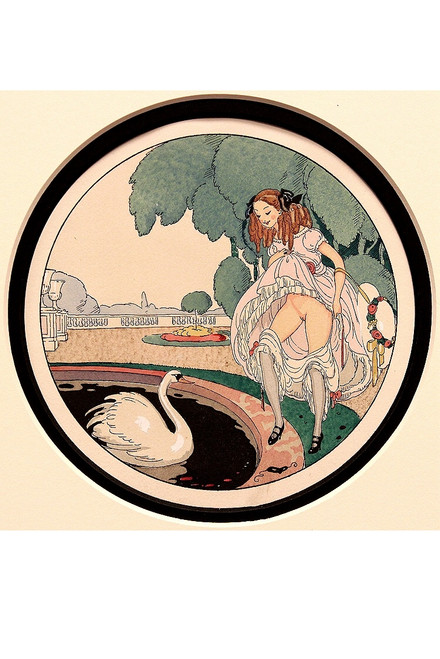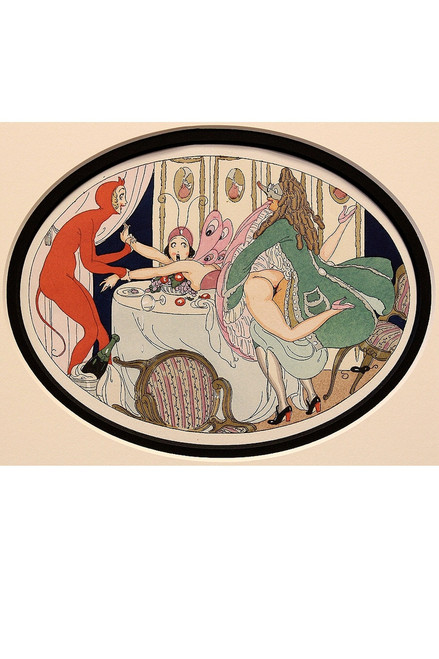
VERINEAU, Alexandre de, (Louis Perceau), (Gerda Wegener - illustrator). Douze Sonnets Lascifs: pour accompagner la suite d'aquarelles intitulee Les Delassements d'Eros. (1925 - LIMITED EDITION)
- SKU:
- 001777
- Shipping:
- Free within the US $45 flat rate international
AUTHOR: VERINEAU, Alexandre de, (Louis Perceau), (Gerda Wegener - illustrator).
TITLE: Douze Sonnets Lascifs: pour accompagner la suite d'aquarelles intitulee Les Delassements d'Eros.
PUBLISHER: Paris: Erotopolis : A l'enseigne du faune, 1925.
DESCRIPTION: LIMITED EDITION. 1 vol., 10-1/4" x 7-7/8", 38pp. and illustrated with 12 additional hand-coloured pochoir plates by Gerda Wegener, limited to 350 copies, originally issued in a cloth backed portfolio this copy bound in contemporary full vellum, each plate bound opposite the corresponding text.
CONDITION: Internally clean and bright, some minor offsetting of plates to text otherwise a VERY GOOD copy.
ADDITIONAL INFORMATION: Gerda Wegener’s (whose life is currently celebrated in "The Danish Girl") 12 aquarelles are not only considered one of the world’s most artistic erotic paintings but her work also comes with a sensational backstory. Gerda’s husband Einar served as a model for her aquarelles. Einar later underwent the world’s first sex-change operation and became a woman.
Gerda Gottlieb (1885-1940) rushed into the Royal Art Academy in Copenhagen to tell her classmates that fellow student-artist, Einar Wegener (1884-1931), had asked her to marry him. Gerda, who was Danish-Swedish, was beautiful and blonde; Einar was dark-haired and delicately handsome. She was nineteen, he a year older. They left for France to make their way in the Paris art world. The couple appeared passionately in love. One day on a whim, Einar picked up Gerda’s dress and put it on. She took out her sketch pad and drew Einar as an ambiguous woman. As time passed, Einar dressed more and more as a woman, and Gerda used him as a model. The artistic work of both was well received, but Gerda was the more successful. By the mid-1920s she had become an important figure in the Paris art world as a portrait painter and and book illustrator.
Louis Perceau (1883-1942), a French poet and writer, still renowned for his erotic works, asked Gerda Wegener to illustrate his book of erotic poetry, Douze Sonnets Lascifs, which was published in 1925. She created twelve watercolors which were individually silk-screened to accompany the 350 copies of the book. The portfolio was inserted in the book. The model for the dark-haired ambiguous woman in the aquarelles was Einar. Later, Einar underwent the world’s first successful sex-change operation. The King of Denmark annulled the marriage between Gerda and Einar, who took the name “Lili Elbe.” They lived together for a while but at Lili’s insistence Gerda married a mutual friend, an Italian officer.
Over the years most of the aquarelles were lost or bought by collectors. The portfolio was often removed from the original book of poetry—which was discarded.









